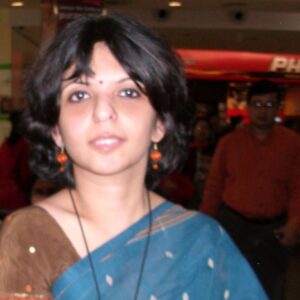Rita dwells on the issue of high blood pressure among the elders. She tells us about its causes and preventions, in the weekly column, exclusively in Different Truths.
Blood pressure can be seen as a barometer of overall circulatory health. Someone with high blood pressure is at a significantly greater risk for heart failure, stroke, chronic kidney disease and damage to the arteries (similar to the damage caused by high cholesterol), which can cause a heart attack.
One in three Indian adults has high blood pressure. According to the World Health Statistics 2012 report, India has low rates of hypertension compared to world figures. Here, 23.10 per cent men and 22.60 per cent women above 25 years suffer from hypertension. India also fares better than the global average of 29.20 in men and 24.80 in women respectively.

According to doctors, however, in absolute numbers, this is a huge population. A bigger problem is that people are normally not aware that they have hypertension. Doctors are also of the opinion that hypertension is likely to become an epidemic in the near future, and approximately one-third of Indians will suffer from it by 2020.
Fortunately, the senior years are not too late to take an active role in lowering blood pressure. Managing blood pressure can be as simple as increasing physical activity and regulating one’s diet. In those cases when a change in lifestyle doesn’t significantly impact hypertension, prescription drugs have proven very effective in regulating blood pressure.
Blood Pressure: What it is and why it is Important
In The Blood Pressure Book: How to Get it Down and Keep it Down, Dr. Stephen P. Fortmann compares blood pressure to a garden hose. The heart pumps blood throughout the body in a network of arteries. When those arteries become too narrow (often caused by plaque build-up from high cholesterol), the volume of blood that the arteries can handle is restricted. Like water in a narrow garden hose, narrow arteries lead to an increase in blood pressure – and high blood pressure can cause damage to artery walls and the heart itself. Damage to the circulatory system – and the complications that can result from it is the primary reason to maintain one’s blood pressure at a healthy level.
But what is a healthy blood pressure level? The exact range considered acceptable can vary. For those individuals with a family history of hypertension or with related complications, like chronic kidney disease, it’s even more important to stay at a low level. A blood pressure reading is composed of two numbers that measure the pressure in your arteries when the heart beats (called systolic pressure) and the pressure in your arteries between heartbeats (called diastolic pressure). A healthy blood pressure should measure below 120/80 (the numbers represent millimetres of mercury). The National Heart, Lung, and Blood Institute provides the following guidelines for understanding normal blood pressure and hypertension:
- Normal blood pressure range
120/80, though the risk of heart disease can begin to increase once blood pressure reaches levels of 115/75. - Prehypertension
A systolic pressure range of 120 to 139 and a diastolic pressure range of 80 to 89. Diagnosis with prehypertension provides an opportunity to work hard through physical activity, diet, and possibly medication to reduce blood pressure to a healthy level. Within four years of diagnosis with prehypertension, one in three adults ages 35 to 64 will develop definite high blood pressure. One in two adults over age 65 will develop definite high blood pressure. - Stage 1 hypertension
A systolic pressure range of 140 to 159 and a diastolic pressure range of 90 to 99. - Stage 2 hypertension
A systolic pressure of 160 or higher and a diastolic pressure of 100 or higher.
It should also be noted that systolic pressure, the blood pressure measured during heartbeats, becomes increasingly important for those individuals past age 50. The most common form of blood pressure in these individuals is a condition called isolated systolic hypertension.
What causes High Blood Pressure in the Elderly?
Surprisingly, there hasn’t been a great deal of research that looks at the elderly as a separate population in terms of blood pressure control, feel most doctors, who advise strict monitoring of prehypertension in order to ensure that it doesn’t have a more serious impact on health. While above-average blood pressure in the elderly is still a concern, it should still be considered in the context o f age. A 40-year-old with a blood pressure of 150/70 is much more likely to develop complications from hypertension than a 70-year-old with the same blood pressure.
f age. A 40-year-old with a blood pressure of 150/70 is much more likely to develop complications from hypertension than a 70-year-old with the same blood pressure.
Doctors stress the fact that those at highest risk of high blood pressure are those who suffer from obesity, those suffering from diabetes, and those with chronic kidney disease. In fact, the risk factors for hypertension are very similar to the risks associated with high cholesterol. Any restrictions or blockages in the circulatory system negatively impact overall heart health. But the kidneys, the primary organ that regulates blood pressure, also become at risk when blood pressure rises. Severe hypertension can cause chronic kidney disease, which in turn limits the kidneys’ ability to continue regulating blood pressure. But regardless of whether hypertension is simply the result of genetic predisposition or the result of an unhealthy lifestyle, it doesn’t have to mean the end of good health.
Managing a Healthy Blood Pressure
For how confusing hypertension can be, learning how to maintain a healthy blood pressure is surprisingly simple. As with other types of circulatory health, like cholesterol, the first step to lowering blood pressure is a lifestyle change. Exercise is essential, as is weight control. Eating a low-salt diet is quite important and at least 30 minutes of exercise each day is recommended. For seniors, exercise can involve simple changes to everyday routine, like walking more often and engaging in household chores. In addition to improving overall cardiovascular health and cholesterol, the presence of which can increase blood pressure by narrowing arteries, exercise can also help with weight loss.
 Related to weight loss is developing a healthy diet, another essential tool for lowering blood pressure. Healthy nutrition is important for all of the standard reasons (positive cardiovascular health, additional energy, etc.) and a few unique reasons as well. A low salt diet is particularly important for lowering blood pressure, as salt indirectly increases the volume of blood (by adding water to the bloodstream), which in turn increases blood pressure.
Related to weight loss is developing a healthy diet, another essential tool for lowering blood pressure. Healthy nutrition is important for all of the standard reasons (positive cardiovascular health, additional energy, etc.) and a few unique reasons as well. A low salt diet is particularly important for lowering blood pressure, as salt indirectly increases the volume of blood (by adding water to the bloodstream), which in turn increases blood pressure.
One of the most common diets recommended for those individuals who struggle with hypertension is called the DASH diet, which stands for Dietary Approaches to Stop Hypertension. The DASH diet, a low-sodium, low-fat diet that emphasises fruits, vegetables, and grains, is the result of a study by the federal government. Compared to two control groups, one that followed a “normal” American diet and the other a traditional diet high in fruits and  vegetables, people on the DASH diet reduced their blood pressure by an average of 6 points of systolic pressure and 3 points of diastolic pressure. Those people in the study who already had been diagnosed with hypertension reduced their blood pressure by 11 systolic points and six diastolic points. Under the DASH diet, an individual is advised to eat no more than a one-quarter teaspoon of salt per day. By comparison, the average person eats about four teaspoons of salt daily, nearly fifteen times more.
vegetables, people on the DASH diet reduced their blood pressure by an average of 6 points of systolic pressure and 3 points of diastolic pressure. Those people in the study who already had been diagnosed with hypertension reduced their blood pressure by 11 systolic points and six diastolic points. Under the DASH diet, an individual is advised to eat no more than a one-quarter teaspoon of salt per day. By comparison, the average person eats about four teaspoons of salt daily, nearly fifteen times more.
But as many people know, diet and lifestyle change can often be very difficult. Medication is also an option for many people, sometimes because an individual has a difficult time achieving significant lifestyle change, and sometimes because hypertension is severe enough to mandate a combination of lifestyle change with medication. For many, treating their high blood pressure with medication can be a difficult subject-one that should always be considered under the guidance of your doctor.
Blood pressure medication can be categorised into three main groups:
Thiazide diuretics: Often the first course of action in terms of drug treatment, these medications focuses on the kidneys by helping the body eliminate sodium, or salt, and water.
Beta Blockers: These medications cause the heart to beat slower and with less force, working to reduce blood pressure by focusing on the centre of the circulatory system itself. Often beta blockers will be prescribed along with thiazide diuretics (combining drugs is a common practice that can lower blood pressure).
Angiotensin-converting Enzyme (ACE) Inhibitors: Commonly prescribed along with thiazide diuretics, ACE inhibitors counteract a natural chemical that narrows blood vessels, which in turn eases pressure on vessels.
Other types of drugs can be effective against hypertension as well. Finding the right combination varies with each person. At Arogya HomeCare (www.arogyahomecare.in), our trained care managers to check and record our elderly care seekers’ blood pressure several times on different days, so the doctors can diagnose whether he/she has high blood pressure or if they require a change of blood pressure medication.
In the fight against hypertension, the best strategy is to recognise one’s individual risks, which might include genetic history, obesity or simple physical inactivity – and act accordingly. For the elderly, moderately high blood pressure might be less serious than it is in a middle-aged person. But even when blood pressure rises minimally past age 50, it’s still important to take the proper steps to ensure healthy senior years. A normal blood pressure is an important first step toward achieving long-term health. Hypertension might be a common problem – but fortunately, it has plenty of solutions.
Source:
©Rita Bhattacharjee
Photos from the internet.
#HighBloodPressure #ElderlyBP #DetectionOfBP #ControllingOfBP #HealthForElderly #ManagingBP #CausesAndRemediesOfBP #DifferntTruths






 By
By


 By
By